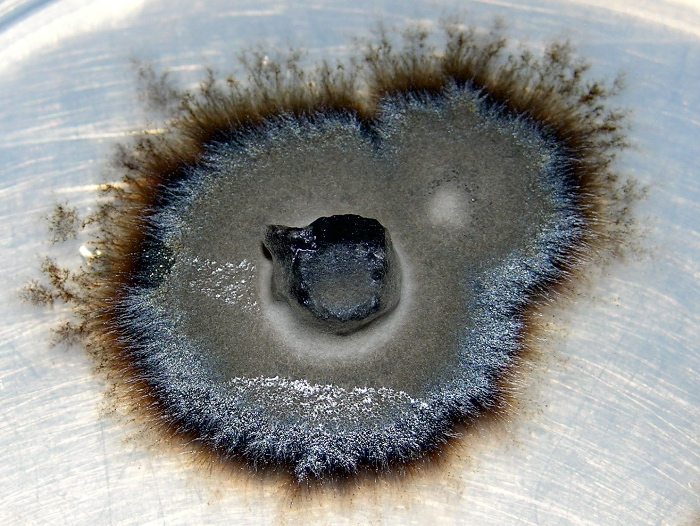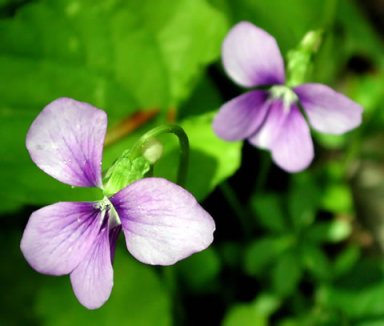Interactions
Like any ecological niche, there are usually more than one species interacting in one area. That means that all the different organisms must find a way to interact whether it is a mutualism, parasitism, commensalism or predation. Yellow Ladyslipper engages in many different forms of symbioses (or relationships).
The Mutualists:
A Mycorrhizal Fungus: A fungus that is closely associated with the roots of a plant
In the early stages of life, C. parviflorum
is known for its necessity of a fungus to acquire nutrients. The seed will
land in soil that contains this fungus and soil organisms will work on
breaking down the outer shell of the seed for germination. As soon as
germination occurs, the fungus moves in on the newly forming rhizomes to
supply the plant with nutrients. The fungus will gain nutrients from its
surroundings, such as decomposing organisms or living trees, and give them
to the plant so the plant can continue to grow. As soon as photosynthesis
begins to occur the dependency of the plant on the fungus will reduce or
even stop. This is classified as a mutualsim because the plant is gaining
increased surface area to absorb nutrients and the fungus gains essential
plant sugars that it uses to build its structure. To learn more
about fungi and their interactions, please visit
Tom Volk's Fungi website.
necessity of a fungus to acquire nutrients. The seed will
land in soil that contains this fungus and soil organisms will work on
breaking down the outer shell of the seed for germination. As soon as
germination occurs, the fungus moves in on the newly forming rhizomes to
supply the plant with nutrients. The fungus will gain nutrients from its
surroundings, such as decomposing organisms or living trees, and give them
to the plant so the plant can continue to grow. As soon as photosynthesis
begins to occur the dependency of the plant on the fungus will reduce or
even stop. This is classified as a mutualsim because the plant is gaining
increased surface area to absorb nutrients and the fungus gains essential
plant sugars that it uses to build its structure. To learn more
about fungi and their interactions, please visit
Tom Volk's Fungi website.
The Pollinators: Insects
As C. parviflorum begins to produce its beautiful flowers, the necessity for pollination arises. This is facilitated by insects that crawl into its well adapted trap flower and rub on anthers on their way out to pick up pollen. When visiting another plant, on the way in the insect will rub on the stigma, depositing pollen and pollinating that orchid. The pollinator will gain a tasty treat and the orchid gains another step in the life cycle.
The Complex Symbiosis:
The Yellow Ladyslipper is dependent on a fungus in its early life stages and this fungus is parasitic on trees around it. However, how would one classify the relationship of the Yellow Ladyslipper with those trees who are losing nutrients? This question is complicated, as there is no direct link from the trees to the orchid. The tree creates its nutrients, sends them to the roots where the mycorrhizal fungus takes and transports them over to the plant. This relationship is a mix between a mutualism (the orchid and the fungus) and a parasitism (the tree and the fungus). For all intents and purposes, this is classified as a complex symbiosis. Some of the trees engaged in this relationship include the Tamarack, White Pine, Sugar Maple, Silver Maple and Cottonwood Tree.
Like any habitat, there usually is some form of competition among the substrate dwellers for soil space. One competitor of the Yellow Ladyslipper Orchid is the Wood Violet. They both occupy the substrate and have shallow root systems.
The Parasites:
Unfortunately for the Yellow Ladyslipper, there is a good handful of organisms that prefer to feast on the orchid. These organisms include mealy bugs, aphids, scale insects, spider mites, white flies, thrips, fungus gnats, slugs and
snails, orchid blossom midge, cockroaches and lubber grasshoppers.



Along with the animals that feast on the orchid, there are fungi that are not mutualistic to the orchid and tend to cause rot; harm and sometimes kill the plant. These include: the black rot fungus, the root rot fungus, the bacterial brown spot, leaf spot fungus and petal blight.
All of the parasites listed above are harmful to the orchid. The pathology (symptoms) that show include yellowed leaves, bumps on the leaves, physical presence of the organism, wilting and rotting. The range of treatment for these parasites include antifungals, destruction of the parasitic organism or removal of the infected portion of the plant. To learn more about cultivating these plants, visit the Facts page.
